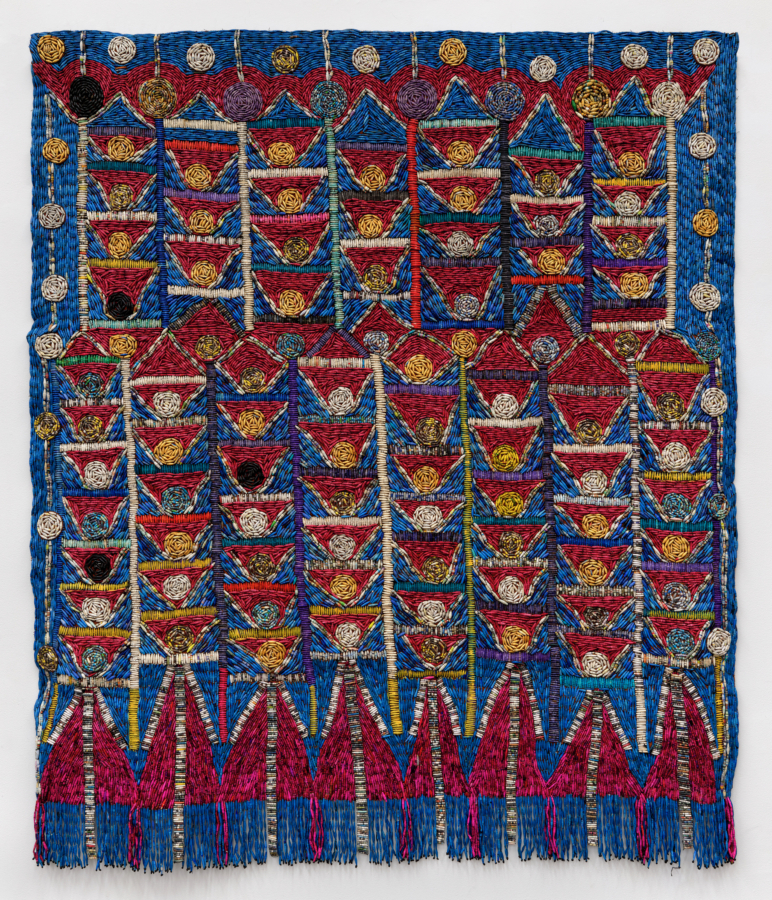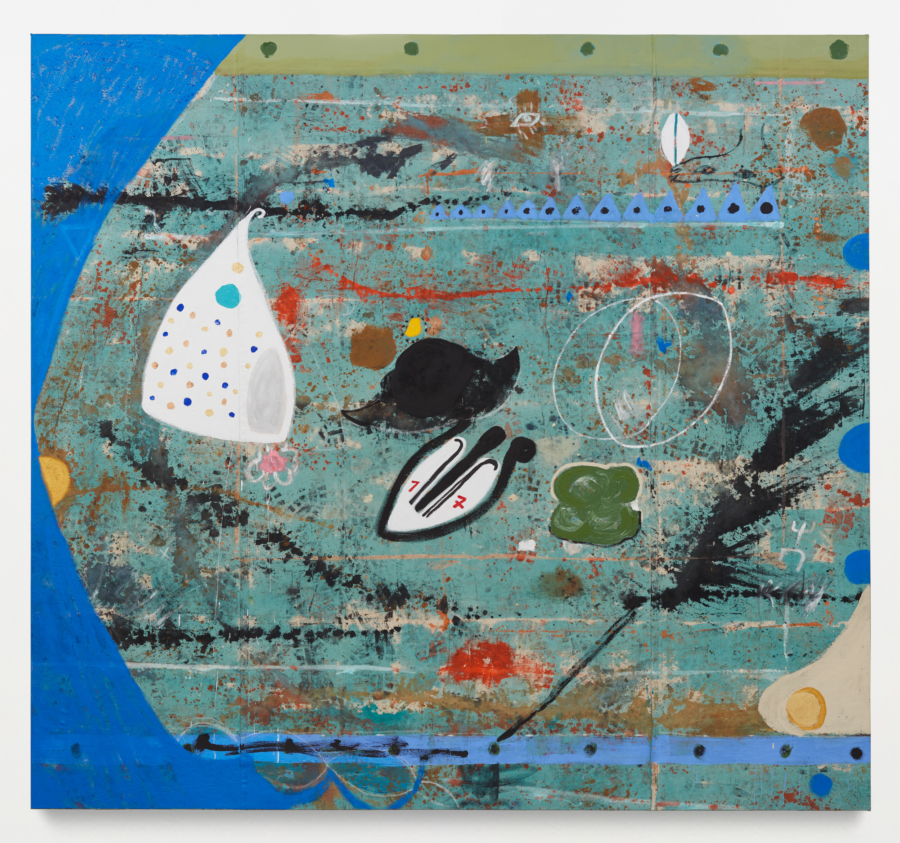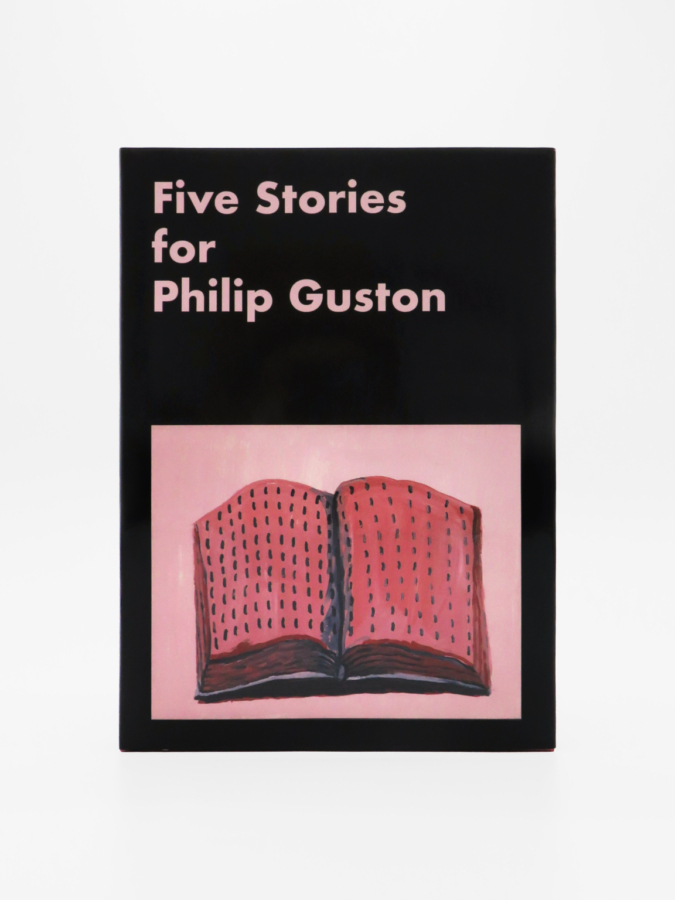Winter/Spring 2013
Gulf Coast, Vol. 26, Issue Winter/Spring 2013
This curious and complex exhibition may be like a quiet underwater explosion, the shock waves of which have not yet hit.
-Jan Butterfield, “The DeLuxe Show”
In 1971, Peter Bradley, artist and associate director of New York’s prestigious Perls Gallery, curated the exhibition titled The DeLuxe Show in Houston. The exhibition presented abstract painting and sculpture made by new York-based artists who were black, white, and Latina. Even today, the list largely remains a who’s who of abstract American artists. Arguably, such diversity in an exhibition not focused on a racial theme is rare even today, but in 1971 it had never been done before.
Indeed, The DeLuxe Show has been historicized as the first major exhibition of contemporary art by both black and white artists—a racially progressive intervention into business as usual in the racially exclusive art scene. Bradley considered the exhibition an opportunity to create a new model for the post-Civil Rights movement—one that would include both black and white artists. He has stated,
This selection breaks down the barriers that create this whole theory of black shows and white shows. The DeLuxe Show marks the very first time that good black artists share the attention and the tribute with good white artists. The black artists look good with them simply because they are good. All the artists in the show certainly have paid their dues.
His project was to open borders beyond the narrow paradigm of black and white race relations and let the art speak for itself. Ultimately, The DeLuxe Show fulfilled three purposes: first, it responded to art patron John de Menil’s request to Bradley to present what contemporary black artists were making; second, it presented an exhibition of work by notable artists in a non-museum space in order to prioritize the viewership of Houston’s economically poor and dilapidated Fifth Ward neighborhood; and third, it challenged the logic of a racially exclusive exhibition.
The DeLuxe Show appeared in a particularly contentious time in the racial politics of American museum exhibitions. In the 1970s, black artists in New York primarily exhibited their work in a small yet dedicated infrastructure of galleries and the Studio Museum in Harlem. This network was forged through a history of key protests in the late 1960s and early 1970s around exhibitions at mainstream art museums, most notably Harlem on My Mind: Cultural Capital of Black America (1969) at the Metropolitan Museum of Art, and The 1930s: Painting and Sculpture in America (1968) and Contemporary Black Artists in America (1971) at the Whitney Museum of American Art. Black artists also labored as activists, founding art spaces and protesting the exclusion of black curatorial expertise and the absence of art by black artists in exhibitions. Even in the geographically distinct context of Houston, The De Luxe Show participated in this discourse. The De Luxe Show was organized in response to the Some American History (1971) exhibition curated by white artist Larry Rivers at the Institute for the Arts, Rice University. What Menil offered to Bradley was an opportunity for black self-representation in response to Rivers’ depiction of Blackness. By commissioning both exhibitions, Menil supported conflicting understandings of the roles of black people in the art world.
In 1969, Rivers was commissioned by de Menil to organize an exhibition that would address black men’s life in American. The subject was Rivers’ idea inspired in part by a 1967 trip to Africa from which he felt an “eagerness to become involved in a work about Black people.” The show had several names up until the final title, Some American History, including The History of Afro-Americans, This Black History, History of the Black American, and The Black Experience. Rivers further explained his impulse to create an exhibition about black people,
Now as then I thought I was especially equipped for the task Why…Some as yet unfigured out notion that my life and my sense of a Black person (sic) life in these United States its peculiar tragedy its exhilarating specialties & white people & that there resides in me some essential talent to be able to act upon it all Rah Rah Rah.
Rivers reluctantly decided to include black artists in his project. He resolved that their inclusion was “necessary” but “presented difficulties,” and the de menils were not enthusiastic about a group exhibition. In 1970, Rivers invited Bradley to be one of the black artists in the exhibition. He did not tell Bradley the title or theme of the exhibition, but requested that Bradley create an artwork based on a black hero. Bradley chose Marcus Garvey and thought of the grand automobile he rode in during his street parades in 1920s harlem. Bradley found an old railroad cart to use for the car and created an abstract geometric sculpture from wood laminate to represent the horse in front of the car. After shipping Marcus Garvey (1971) to Houston, Bradley did not see it again; neither was he invited to the exhibition opening. Later in 1971, Bradley acquired a photograph of his work in the show and saw that Rivers had pasted photos of Marcus Garvey all over it. Infuriated by this outrageous act, Bradley confronted Rivers in his 14th Street studio and punched him in the mouth.
Rivers’ vandalism of Bradley’s work indicates his desire to have final control over the creation and presentation of all the works in the exhibition. Even more than that, changing Marcus Garvey indicates Rivers’ discomfort with Bradley’s choice of abstraction, and objection to Bradley’s non-figurative approach to visualizing Blackness. Rivers’ addition of photographs formed a layer over the wooden carriage platform. They lined the surface with two reproductions of photographs of Garvey: a studio portrait, and an image of him in his elaborate Harlem street parades of the 1920s. These images make the work visualize the reference to Garvey’s activities through explicit representation. Rivers took away the pleasure of exploring the signifying possibilities of the abstract form and denied the participation of the work in the abstract minimalist sculpture style of the day. Instead, the original work was destroyed and transformed into a didactic illustration of Garvey’s regal processions—more of a documentary artifact than abstract creation.
Cultural critic Bell Hooks has addressed the fear of black people engaging in and producing abstract thought as a way to maintain racial hierarchies. Hooks writes,
Racism is perpetuated when blackness is associated solely with concrete gut level experience conceived either as opposing or having no connection to abstract thinking and the production of critical theory. The idea that there is no meaningful connection between black experience and critical thinking about aesthetics or culture must be continually interrogated.
Rivers literally transformed Bradley’s manifestation of abstract thought into a figurative work by illustrating it with images from Garvey’s life experiences. He redefined Bradley’s “meaningful connection between black experience and critical thinking about aesthetics” into a work that Rivers decided was more appropriate for Bradley to produce. Equally remarkable is that Rivers’ addition made Bradley’s art appear to be more like his own. Known for his collage-effect style of painting and crude approach to representing the figure, the act of gluing paper onto a finished sculpture places within the sensibility of the artist. However, gluing paper onto another person’s artwork without permission is quite another matter and a true artistic transgression.
After the Some American History exhibition was at Rice, de Menil approached Bradley directly to create an exhibition on what contemporary black artists were doing. At first, Bradley refused to curate the show. De Menil explained, “[Peter Bradley] said that no serious black artist today would accept to be included in an exclusively black show which has a patronizing flavor, and that he wanted the exhibition to include white artists as well.” Bradley was not an aspiring curator. He had already found success in the mainstream art world as associate director of Perls Gallery on Madison Avenue since 1968. He refused payment to curate The DeLuxe Show. His conditions for agreeing to curate the show were twofold: one, that it not consist of exclusively black artists, and two, that a catalogue be published to document the exhibition. He was fully aware of the limited opportunities for black artists in the art world, and wanted to work outside of the mainstream museum and gallery system to cultivate a new space. The DeLuxe Show was presented in the De Luxe theater, a formally racially segregated theater for Black Houston that Bradley repurposed for an interracial art exhibition. The DeLuxe Show, therefore, offered two paradigms for the Fifth Ward: a space to exhibit visual art, and interracial cooperation.
The Menil Foundation anticipated three results from The DeLuxe Show:
- It will show the black community in Houston that there are black artists of quality who compete on equal terms with white artists of their generation.
- It will have given stimulus to black art activities in town and challenge the black community in supporting them.
- It will have initiated a co-operation between the Black Art Center and the Institute for the Arts, as also the Media Center.
It is notable that there were not any black Houstonian artists in The DeLuxe Show, a criticism that emerged from community discussion. Community activist Mickey Leland who helped organize Fifth Ward residents to renovate the theater reported, “The show was titled ‘Hard Art at the DeLuxe’ and it was hard, it was over my head. But they did enjoy it, there is a definite sentimental attachment to the theatre itself.” As a Harris County Community Action Association employee explained, “Nobody I know who went to the show was even able to describe what was there. To me it showed a curious absence of a sense of cultural relevance. Everybody knows the ghetto mood has changed over the last few years. The people know now why they wouldn’t necessarily have a feel for all the white man’s art they’ve been seeing. If it was really for the people there, then their involvement, the existing arts efforts should have been supported first.” She also believed that the exhibition should have included local artists “who are just now taking off on the aesthetic of Black art.” Ayers makes a good point about the gap between the economically impoverished residents of the Fifth Ward and the mainstream New York art world, but the strategy for the show was designed to involve local residents through a different approach.
Bradley was not interested in an exhibition that fulfilled the expectation of what was expected to be Black Art. As he stated,
Art exists everywhere around us. The colors and shapes of paintings and sculptures are seen in our daily lives. The artists in this exhibition depict in their works the urge for complete exploration. These works carry a particular clarity: a window into a new art. Their art is honest and wide open, not burdened with gestures and other clichés. This art should be like the new world we’re all striving toward, free of obstruction.
The DeLuxe Show was not curated to present figurative representations that reflected the community. It was, instead, a conceptual project that was as much about freedom from the expectation of what at by black artists should look like, as the freedom to make art without content and explore a phenomenological experience of the object.
Butterfield’s article offers a liberal perspective on the role of race in the exhibition:
The exhibition includes some of the most important artists around who use color as structure, and some solid sculptors, but even more importantly it happens that roughly half of the artists included in the exhibition are black. The point of all this is that a point is not made of it—except through the Fifth Ward grapevine where for many it is the only factor that gives the show credence.
Later in the article, Butterfield makes this point of not making a point of race again, saying,
[The DeLuxe Show] is instead a “mainstream” exhibition which happens to have some black artists in it. It is relatively easy to choose up sides and argue the relative merits of “Black Art,” “Black Artists” and the influence of African Ancestry—it is a convoluted dialectic. The critical literature of the past three years is full of pros and cons and heated disagreements. Suffice it to say my personal interest lies primarily in the quality of the art. The rest is politics and sociology. That point having been made, I choose not to discuss the blackness or whiteness of any given artist from here on out [italics mine].”
Her liberal gesture toward colorblindness denies the work that must be done consciously and purposefully to make an intervention into racially exclusive exhibition practices.
The DeLuxe Show was the first of three exhibitions held at the theater before it shut down. Through his exhibition Bradley was able to hire many residents of the Fifth Ward to refurbish the theater and offer something unexpected to the community. The exhibition also helped counter the representation of black artists through Rivers’ vision of Black American history by offering cutting edge art from New York by a black curator. Bradley’s exhibition also modeled how an interracial group of artists can show their work together. However, it was disappointing to Bradley that only two white artists, Kenneth Noland and Larry Poons, were enthusiastic about participating in the exhibition. Noland’s hands-on involvement with installing The DeLuxe Show was critical to its preparation. However none of the artists attended the opening. Bradley’s friend, art critic Clement Greenberg, was present for the installation and opening of the exhibition. In an interview that appears in the catalogue, Greenberg summarizes the immediate impact of The DeLuxe Show experiment:
Well, here was a quantity of “hard” contemporary art in a newly resplendent interior behind a dilapidated exterior in what looked like a poor neighborhood. And the “hard” art—the presence of it—seemed to be animating that neighborhood. Rather the interest in the art that the neighborhood people were showing did the animating: the grave and quiet interest which had all the more effect on an outsider because it was so grave and intent. People were really looking. They were taking the art seriously. That was what was the essential factor in the exhilaration…And the “event”: well, whatever you might have expected to be incongruous in the situation failed to materialize. Sophisticated art was being exposed to presumably unsophisticated tastes, and yet the juxtaposition turned out, in this case, to be anything but incongruous.



